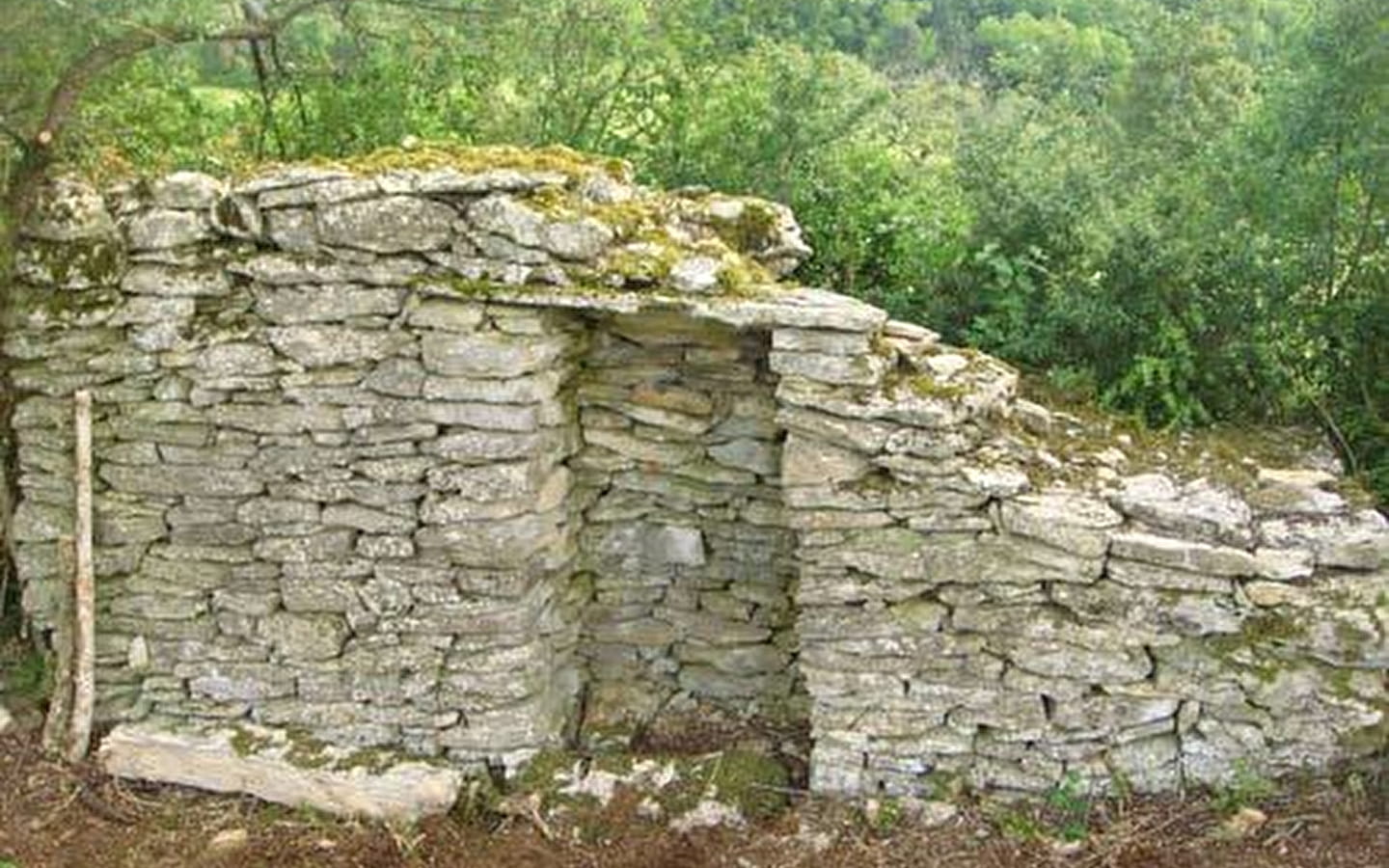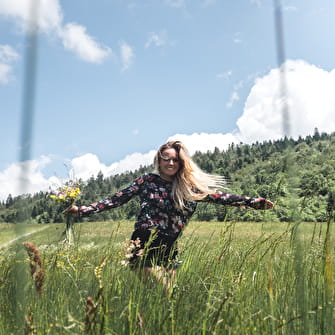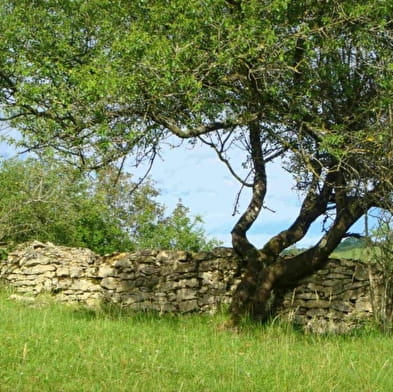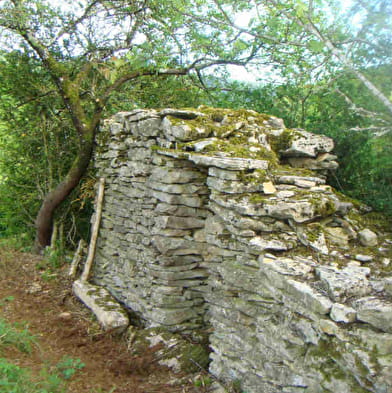
Capettes du Revermont
Capettes or dry stone huts
On the whole of the first plateau, history has gradually shaped a dry stone landscape, criss-crossed by murgers concealing strange buildings. We can observe a dry stone bocage, built over time and which shelters a rich ecosystem; in fact the stone walls have allowed vegetation to develop in the form of hedges.
An example of rural architecture, the huts are there, hidden through the walls, discreet, strange and one imagines them impregnated with great secrets.
They are commonly called "Capettes", "les loges", "les cabordes", "les cabanes de berger". They can be found in all the surrounding communes, at the bend in a path or on the edge of a field. They are often included in a dry stone wall. This type of construction is quite rare in the northern part of France but can be found in the Lot, Périgord and Vaucluse. Farmers used to take stones from their fields and pile them up to mark the boundaries of their plots.
Agriculture evolved in favour of livestock farming and it was the farmer-breeders who then used the huts while guarding their herds.
Sometimes, when the land was far from the villages, the peasants built a "lodge" in these murgers in order to take shelter and store their tools during a rainstorm or a meal. Numerous huts have been found in the Jura and Revermont regions, but the constructions are fragile: having lost their function, they are no longer maintained and the re-parcelling of the land has caused them to disappear, along with the murgers that housed them. This heritage is therefore in the process of disappearing.
How old are the huts? A mystery. There is very little written information about these huts or when they were built. Archaeologists have formulated several hypotheses: they could date back to the Gallic or even Neolithic period. Some believe that the principle of dry stone construction dates back to the Middle Ages. Others believe that they date from a period (12th century) when cultivation was the rule on the first plateau. Finally, the most advanced assumption is that they were built during the great clearings preceding the 19th century.
The only certainty is that they are at least 150 to 200 years old.
The huts are original constructions because of their shape and the exclusive use of flat, thin stones. Many of them have a corbelled vault. The base of the hut is straight and the vault is formed by the upper stone protruding from the lower one. Most of them face away from the prevailing wind. To offer more mystery, the floor, the vault and the entrance differ from one to another. Inside, stone benches run along the walls. Depending on the size, they can accommodate from 2 to 10 people. The vaults can be domed, straight, pointed arch or battened.
- Pets not allowed









